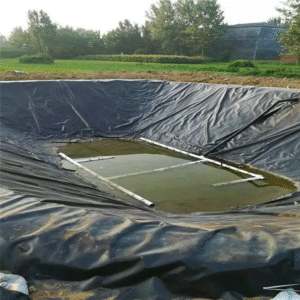Generally, it is determined according to construction requirements. The primary function of a geomembrane is seepage prevention. Geomembranes are not only used in hydraulic engineering but also in the storage projects of solutions with complex chemical compositions or industrial waste. When applied in different seepage prevention projects, the selected thickness of geomembranes varies. The thickness of a geomembrane is determined based on two aspects of requirements. Firstly, to control the leakage amount, a thicker geomembrane can reduce its permeation.

Secondly, it is to ensure that the geomembrane will not be punctured by the underlying soil particles and leak under water pressure.
The required thickness of a geomembrane depends on the magnitude of water pressure acting on the membrane material, the particle size of the underlying layer, as well as the elastic modulus and allowable tensile stress of the membrane material itself.
Considering the water pressure in reservoirs: for a water depth of around 2 meters, a geomembrane with a thickness of 0.75 mm or more is recommended.
For a water depth of around 4 meters, a geomembrane with a thickness of 1.0 mm or more is recommended.
For a water depth of around 8 meters, a geomembrane with a thickness of 1.2 mm or more is recommended.
The specific thickness of the geomembrane for seepage prevention in a reservoir should be determined based on the actual situation.


